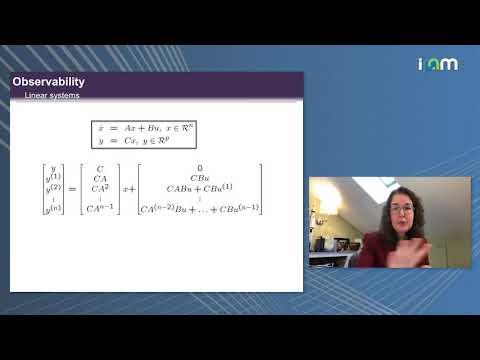Description:
Explore analytical and empirical tools for nonlinear network observability in autonomous systems in this 44-minute lecture from the Mathematical Challenges and Opportunities for Autonomous Vehicles 2020 workshop. Delve into the intersection of geometric nonlinear systems theory and empirical Gramian methods for analyzing engineered and biological multiagent systems. Learn about optimal sensor placement, network observability, and the impact of process noise on stochastic systems. Discover applications in autonomous multiagent systems, network synthesis with privacy guarantees, disease spread tracking, and insect wing strain sensor placement. Gain insights into nonlinear dynamics, remote sensing, robustness, and active sensing in engineered systems. Examine topics such as gyroscopic sensing, reduced-order modeling, Fisher information bounds, and optimization algorithms for sensor selection and placement.

Analytical and Empirical Tools for Nonlinear Network Observability in Autonomous Systems
Add to list
#Engineering
#Robotics
#Autonomous Systems
#GIS
#Remote Sensing
#Mathematics
#Applied Mathematics
#Mathematical Modeling
#Computer Science
#Network Topologies